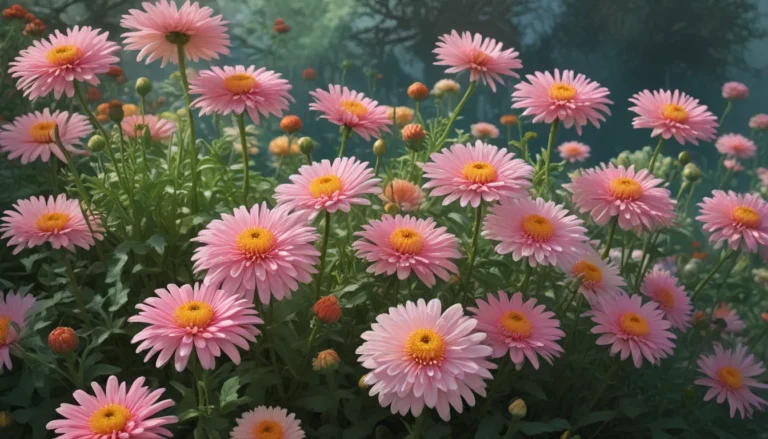The Complete Guide to Growing and Caring for Texas Mountain Laurel

Unveiling the Charm of Dermatophyllum secundiflorum
Imagine driving down the road when suddenly, the sweet fragrance of Texas mountain laurel catches your attention and beckons you to stop in your tracks. The delightful aroma of this plant’s pretty purple flowers is truly captivating, spreading its scent several feet away and creating a heavenly atmosphere.
But there’s more to Texas mountain laurel than just its intoxicating fragrance. Let’s dive into the world of this captivating plant and explore everything you need to know to grow and care for it successfully.
What You’ll Discover
- Exploring the Wonders of Texas Mountain Laurel
- Delving into Cultivation and Historical Significance
- Unraveling the Secrets of Propagation
- Mastering the Art of Growing Texas Mountain Laurel
- Top Growing Tips for Thriving Plants
- Understanding the Art of Pruning
- Finding the Best Sources to Purchase
- Managing Pests and Diseases
- Unlocking the Versatility of Texas Mountain Laurel
- Quick Reference Growing Guide for Easy Use
Exploring the Enchantment of Texas Mountain Laurel
Texas mountain laurel, with its glossy dark green leaves and clusters of showy flowers, is a sight to behold. These slow-growing plants, capable of reaching impressive heights, boast a rich history and charming characteristics that make them a popular choice among gardeners.
While their enchanting aroma and vibrant blooms steal the show, it’s essential to understand the various names, such as coral bean and mescal bean, associated with this plant. With origins in Texas, New Mexico, and northern Mexico, Texas mountain laurel has become a beloved addition to many landscapes.
Delving into Cultivation and Historical Significance
Beyond its beauty, Texas mountain laurel has a storied past, with indigenous tribes using its seeds for ritualistic purposes. Despite the toxic nature of its seeds and leaves, these plants have played a significant role in various cultures, showcasing their unique allure and historical importance.
Unraveling the Secrets of Propagation
If you’re looking to propagate Texas mountain laurel, patience is key. While cuttings may not be the best option, growing these plants from seeds can be rewarding with the right techniques. From soaking the seeds to scarifying them for optimal growth, there are several strategies to consider for successful propagation.
Mastering the Art of Growing Texas Mountain Laurel
To ensure robust growth and vibrant blooms, Texas mountain laurel thrives in alkaline, well-drained soils with ample sunlight. With minimal irrigation and care requirements, these plants can flourish in various conditions, making them a versatile and appealing choice for any garden.
Top Growing Tips for Thriving Plants
- Plant in a sunny location
- Ensure alkaline and well-drained soil
- Water regularly during the initial growth phase
Understanding the Art of Pruning
While Texas mountain laurel typically does not require pruning, alterations can be made to shape the plant to your desired form. By keeping flowering patterns in mind and following proper pruning techniques, you can enhance the beauty of these plants without compromising their allure.
Finding the Best Sources to Purchase
Whether you’re looking for live plants or seeds, reputable garden centers and nurseries are ideal locations to acquire Texas mountain laurel. While sourcing seeds online may yield varying results, obtaining live plants locally ensures quality and viability for successful growth.
Managing Pests and Diseases
While Texas mountain laurel is deer-resistant, it may face challenges from genista caterpillars that can strip leaves. By employing effective control measures such as Bacillus thuringiensis, you can protect your plants from these common pests and maintain their health and beauty.
Unlocking the Versatility of Texas Mountain Laurel
From serving as a stunning specimen tree to creating a lush screen, Texas mountain laurel offers a range of possibilities for landscape design. Whether you’re looking to add visual interest or incorporate fragrant blooms into your garden, these plants deliver both aesthetic appeal and functionality.
Quick Reference Growing Guide
- Plant Type: Shrub
- Flower/Foliage Color: Purple; dark green
- Native to: Texas, New Mexico, Mexico
- Maintenance: Low
- Hardiness (USDA Zone): 7b-11
- Tolerance: Rocky soil, drought
- Bloom Time/Season: Late winter, early spring
- Soil Type: Poor to average
- Exposure: Full sun to partial shade
- Soil pH: Above 7.2 (alkaline)
- Spacing: 10 feet
- Soil Drainage: Well-draining
- Planting Depth: Seeds: 1/2 inch; transplant: same depth as root ball
- Water Needs: Minimal
- Height: 15 feet
- Spread: 10 feet
- Family: Fabaceae
- Growth Rate: Slow
- Genus: Dermatophyllum
- Species: secundiflorum
- Common Pests: Genista caterpillar (also known as sephora worm)
- Common Disease: Root and crown rot
In Conclusion
Texas mountain laurel, with its unique charm and delightful fragrance, is a must-have addition to any garden. By understanding its cultivation, propagation, and care requirements, you can enjoy the beauty and resilience of these plants year after year. Whether you choose to grow them as specimens or screens, Texas mountain laurel is sure to captivate both your senses and your landscape.
Share your experiences growing Texas mountain laurel in the comments below and connect with fellow gardeners to exchange tips and insights. For more in-depth guides on growing shrubs, explore our recommended articles for expert advice and inspiration.
Remember, when it comes to transforming your garden with captivating blooms and aromatic scents, Texas mountain laurel stands out as a true gem of the plant kingdom. Happy gardening!





